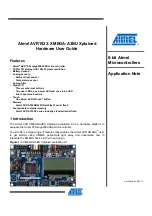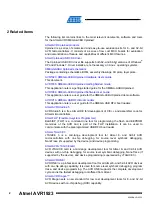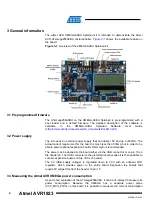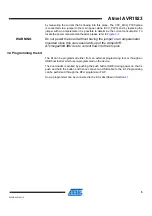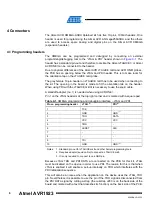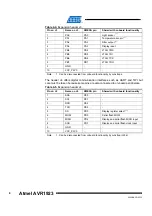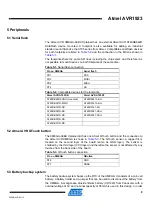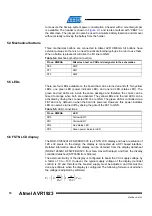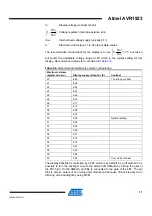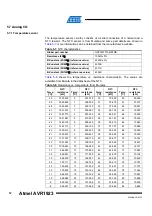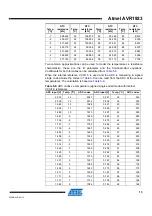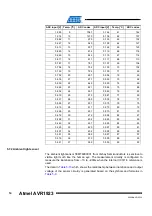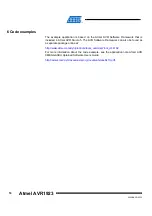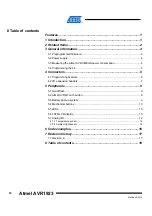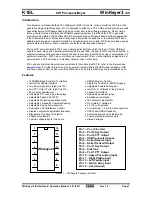
Atmel AVR1923
7
8394B-AVR-02/12
This however will disable the JTAG interface until the connection is reestablished by,
for example soldering a bridge on the cut-strap.
4.2 I/O expansion headers
The Atmel AVR XMEGA-A3BU Xplained headers J1, J2, J3, and J4 offer access to
the I/O of the microcontroller in order to expand the board, for example by mounting a
top module onto the board.
The header J1 offers digital communication interfaces like UART, TWI and SPI.
shows how the Atmel AVR XMEGA is connected to the header.
NOTE
When using TWI please note that no pull-ups are mounted on the board from the
factory, so it is required to either enable the internal pull-ups of the device or to mount
the external pull-ups on the available footprints (R200 and R201). Please refer to the
assembly drawing in the design documentation for the location of these footprints.
Table 4-2.
Expansion header J1.
Pin on J1
Name on J1
XMEGA pin
Shared with onboard functionality
1 SDA
PC0
-
2
SCL PC1 -
3 RXD
PC2
-
4 TXD
PC3
-
5 SS
PC4
-
6 MOSI
PC5
-
7 MISO
PC6
-
8 SCK
PC7
-
9 GND
- -
10 VCC_P3V3
- -
The header J2 is connected to analog ports of the XMEGA as shown in
.
Table 4-3.
Expansion header J2.
Pin on J2
Name on J2
XMEGA pin
Shared with onboard functionality
1 ADC0
PB0
-
2 ADC1
PB1
-
3 ADC2
PB2
-
4 ADC3
PB3
-
5 ADC4
PA4
-
6 ADC5
PA5
-
7 ADC6
PA6
-
8 ADC7
PA7
-
9 GND
- -
10 VCC_P3V3
- -
The I/O connected to the expansion header J3 is shared with on-board features as
sensors and JTAG interface. Therefore care must be taken when J3 is used for
expansions.
shows the mapping of the XMEGA I/O to J3.

